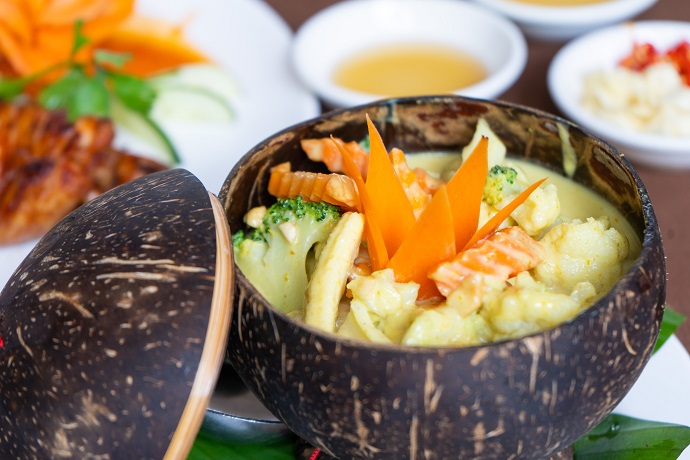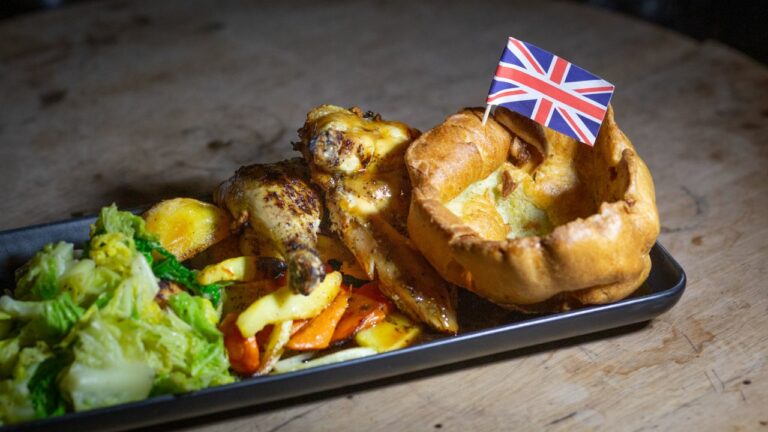Introduction: Understanding Fish Sauce in Cambodian Cuisine
Fish sauce is a ubiquitous ingredient in Southeast Asian cuisine, particularly in Cambodian dishes. It is a cornerstone of Cambodian cooking, adding depth and umami to the dishes. Fish sauce is a fermented condiment made from fish, salt, and water that has been used for centuries in Southeast Asian cuisine. It is a crucial ingredient in traditional Cambodian cuisine, providing a unique and robust flavor that is difficult to replicate with other ingredients.
History: The Origins and Evolution of Cambodian Fish Sauce
Cambodian fish sauce, also known as prahok, has been a staple of Cambodian cuisine for centuries. The origins of fish sauce can be traced back to ancient China, where it was used as early as the third century AD. As trade routes developed throughout Southeast Asia, fish sauce became a widespread ingredient, and it eventually found its way to Cambodia. Over time, Cambodian fish sauce has evolved to become a unique condiment with distinct flavors and a crucial ingredient in Cambodian cuisine.
Ingredients: What Goes into Making Cambodian Fish Sauce?
Cambodian fish sauce is made from a few basic ingredients: fish, salt, and water. The fish used can vary, but traditionally it is made using small, freshwater fish such as the Cambodian trey riel. The fish are cleaned and mixed with salt, then placed in barrels or jars to ferment for several months. The resulting liquid is then drained and bottled. Some Cambodian fish sauce may also contain sugar, garlic, or other spices, depending on the recipe.
Production: How Cambodian Fish Sauce is Made
The production process for Cambodian fish sauce is a time-consuming and labor-intensive process. First, the fish are cleaned and mixed with salt to extract their juices. The mixture is then placed in large jars or barrels and left to ferment for several months. As the fish ferment, enzymes break down the proteins into amino acids and peptides, creating the distinctive umami flavor. After fermentation, the liquid is drained and bottled, ready for use.
Flavor Profile: The Unique Taste of Fish Sauce in Cambodian Dishes
Cambodian fish sauce has a unique and robust flavor that is difficult to replicate with other ingredients. It is salty, savory, and umami-rich, with a slightly sweet undertone. The flavor can vary depending on the type of fish used and the length of fermentation. Cambodian chefs often use fish sauce as a flavor enhancer, adding depth and complexity to their dishes.
Culinary Uses: How Cambodian Chefs Utilize Fish Sauce
Cambodian fish sauce is a crucial ingredient in many Cambodian dishes, from soups and stews to dipping sauces and marinades. It is a versatile condiment that can be used in a variety of ways, adding depth and umami to a wide range of dishes. Cambodian chefs often use fish sauce as a base for sauces and dressings, adding other ingredients to create a complex flavor profile.
Health Benefits: The Nutritional Value of Cambodian Fish Sauce
Cambodian fish sauce is a nutritious condiment that is rich in protein and minerals. It is also low in calories, making it an excellent addition to a healthy diet. Fish sauce is a good source of omega-3 fatty acids, which have been linked to a variety of health benefits, including improved heart health and brain function.
Conclusion: Why Fish Sauce is Essential in Cambodian Cooking
Cambodian fish sauce is an essential ingredient in traditional Cambodian cuisine, adding depth and umami to a wide range of dishes. It is a versatile condiment that can be used in a variety of ways, from soups and stews to dipping sauces and marinades. Cambodian chefs have been using fish sauce for centuries, and its unique flavor has become a cornerstone of Cambodian cooking. Whether you’re a fan of traditional Cambodian dishes or looking to experiment with a new ingredient, fish sauce is a must-try ingredient with a rich history and a unique flavor.










